Heated floor under linoleum on a wooden floor: step-by-step installation instruction
Classic heating systems are gradually being superseded by more economical types. Increasingly, suburban property is equipped with floor heating schemes. A large number of owners of houses with wooden floors wish to acquire alternative heating, which with the introduction of new developments has become possible.
We will talk about how to put a warm floor under linoleum on a wooden floor. In the article we presented, we detail the options for installing floor heating systems and the technologies for their implementation. Recommendations are given for laying linoleum on top of a heating circuit.
The content of the article:
Why should you choose a warm floor?
The classic use of heating systems implies the presence of radiators that spread their heat when heated, and then maintain the heat in the room. As a rule, batteries are mounted at a certain height in the area posting windows or load-bearing walls. The air in the room gradually warms up.
Following the physical laws, warm air masses are rapidly rising. As a result, the upper part of the room becomes warm and the floor cold. Thus, a large amount of energy is wasted inefficiently.
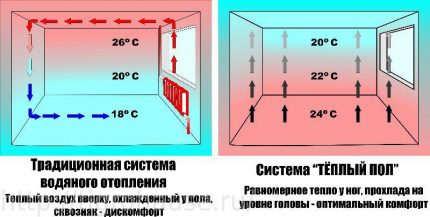
When using the technology of underfloor heating, heated air masses accumulate at the bottom, and slightly chilled - in the upper part, under the ceiling. This option of temperature distribution with a difference of up to 2-4ºС is the most optimal and comfortable for humans.
The most efficient heating system
Often, home owners are thinking about how to choose a heating system. A competent approach in this matter ensures the normal functioning of the project. Today there are two groups.
Option # 1 - water heating circuit
On a reliable design from pipes circulates coolant. This form of floor organization is characterized by durability and productive heat transfer.
The cost of a water system is lower than an electric system, but there are also disadvantages. For example, the path along the contours of the floor heating reduces the temperature of the coolant, so there is a limit on the length of the lines.
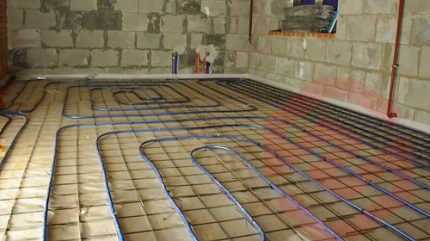
But water floors are quite suitable for heating individual housingespecially for the first floor. They are connected to the boiler, which creates a truly economical circuit.
The main feature of such a system is that its installation is carried out “wet”, in high-quality concrete screed. To do this, qualified installers withstand the specified height and the rules for the formation of a cement-sand layer on a wooden floor.
It is allowed to put the screed on the rough floor, which will increase the load several times. In addition, it will be necessary to create high-quality waterproofing, which eliminates the ingress of any amount of moisture. Thus, the height of the floor increases from 8 to 12 cm.
Option # 2 - electric heating circuit
A particularly productive and advantageous option is infrared-type film products. The heating elements are carbon-based flexible heaters that have a laminated sheath. In practice, a solid plate is obtained, symmetrically divided into heating sections.
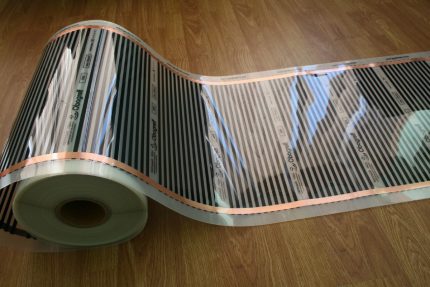
The advantage of a film type of floor is that it transfers heat to the room evenly. The design serves for a long time and does not need a systematic and expensive service.
Types of quality linoleum
The rational choice of floor coverings is the fundamental basis for the successful implementation of a heated floor project.

Finishing material should be selected based on the degree of toxicity of the raw material.
Particular attention should be paid to the composition and safety of the special coating:
- Vinyl. The product is formed on the basis of PVC, which gives it a beautiful design. But with strong heating, the material becomes a source of an unpleasant and pungent odor.
- Relin. The basis for the production of such linoleum is bitumen, synthetic rubber and high-quality rubber. The front layer is problematically undergoing heating, which does not allow its use in living rooms and premises.
- Nitrocellulose (colloxylin). The material has a high level of moisture resistance, but lends itself well to combustion.
- Gliftal (alkyd). The fabric-based flooring does not withstand high temperature conditions, which leads to significant deformations.
- Marmoleum. environmentally friendly material has a high quality workmanship, which gives it refractory and antistatic characteristics.
Professional builders agree that linoleum is suitable for the formation of a water warm floor marmoly or vinyl type.A more economical option is alkyd modifications with a special film coating.
An important factor is the ability of linoleum to conduct heat. If this indicator is low, then there is no point in using it. Beware of purchasing jute flooring, various felt and PVC foam.
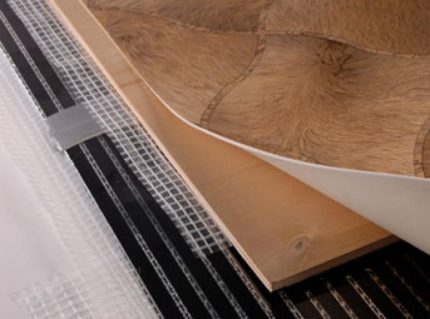
Between the film heater and the relatively thin linoleum, it is necessary to place a strong base, for example, plywood. By ignoring this recommendation, you will ensure that all flaws are visible to the naked eye.
Preparing the base of wood
Builders claim that warm water floor it is allowed to lay on the old structure. However, this will require careful preliminary surface preparation. First of all, it is necessary to eliminate cracks and gaps of different sizes. Otherwise, the system will not give the expected work efficiency.
Brief Instruction:
- Grind the old coating.
- We mask cracks and gaps.
- We lay plywood sheets.
- Having fitted the fragments, we fix them on the screws.
The newly formed base must be treated with an antiseptic solution and allowed to dry.
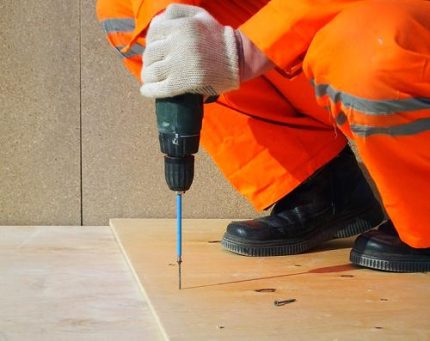
Experienced craftsmen for the construction of a thin but strong base use functional scoring or even coating (plywood, chipboard, etc.). In the second option, you should carefully monitor that the edges of the canvas are tightly fitted together.
Competent installation of electrical devices for STP
Careful preparation of all the necessary materials for the construction is an important point. When assembling a floor heating structure, it is necessary to purchase a high-quality film element. The product is laid at a distance of 50 cm from the walls.
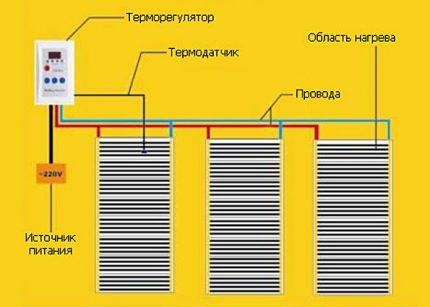
If large objects on top do not allow heat to pass through, then it gradually returns back to the source. As a result, the conductor may burn out or partially deform. Determining the exact amount of film is carried out based on technology and styling features.
For the continuous operation of the heaters, clip-clamps are required that carry out the fastening of the contacts (2 units on a separate strip). But first you need to lay the insulation material with a high reflection coefficient, as well as install thermostats, prepare copper wires.
Thermal insulation
Laying the insulating layer does not take much time, but this is a very important stage. The event is mandatory, since heat without a protective barrier will go up and down. As a result, a large amount of energy is spent irrationally.
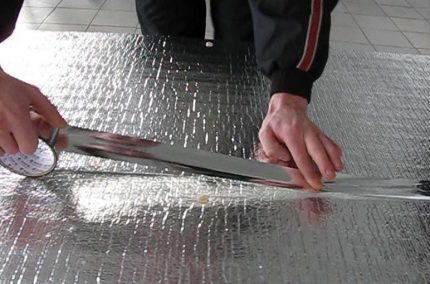
Each strip is attached to the base with stapler and double-sided tape. The stripes are joined without any gaps. The joints are carefully glued with tape.
Rules for forming a film floor
Process rolling infrared film carried out above the insulator at a distance of 50 cm from the wall. In this case, the placement of the copper strip should be clearly below. If necessary, cut the material into equal bands, based on the labeling of the film sections.
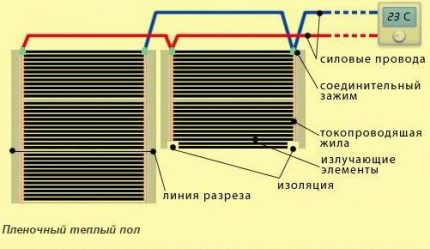
Carbon-based heaters must not be damaged. If you find scratches or tears on the product, then such places should be treated with mastic on a bitumen basis. This option is also great for insulating copper electrodes. Joints of materials are securely fastened with special clamps.
The parallel connection diagram has the following sequence:
- the first contact is placed on the surface of the electrode inside a special film. The second contact is carefully applied from above;
- strong and reliable connection is achieved by tight pressing down electrode with a clamp using pliers.
After a detailed laying of all the bands of the infrared-type film, the formation of a common web is carried out by gluing with tape.
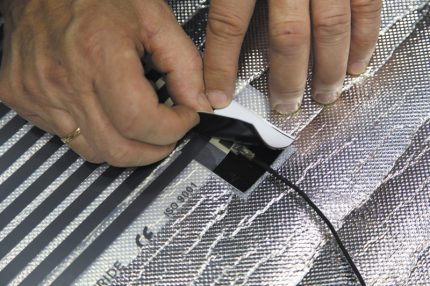
High-quality sizing of the fabric around the perimeter prevents slipping.
How to install the thermostat?
Installation thermostat in each room allows you to most effectively operate the floor heating system. Separate temperature sensors stick to stripes of IR film using mastic. In addition, each device must be securely fixed to the carbon fiber thermal element.
The output wires of the sensor is carried out to the nearest wall. To avoid irregularities, a groove under the cable is cut out in the heat insulator.

In order to increase the efficiency of electrical protection, all devices with a power of more than 2 kW are connected to a separate circuit breaker. Setting the floor temperature to 30 ° C, wait for the film to warm up.
Thus, one can study the state and functioning of the system. If serious flaws are found, they are eliminated.
The last stage includes the installation of insulation - a film of polyethylene type, which reliably closes the underfloor heating system. The product is carefully rolled out on top of the heating elements and fixed with small screws to the base of the tree. Perform this procedure carefully so as not to catch the electrodes.
Secrets of a water-type underfloor heating
The implementation of installation work in this format of the system is to form a special wooden base with grooves. This is where the pipes will be placed. An alternative is to set them to polystyrene mats that are tightly covered by heat exchangers.
Complex of preparatory work
As a rule, logs are laid on a wooden base, on which a full floor is subsequently formed. Wooden elements are placed at the same distance of 60 cm and with equal height.
If you ignore these recommendations, the finish surface of linoleum will be skewed. Between the beams under the heater evenly lies a layer of protection against steam, condensate and water.
The use of high-quality and original materials is the key to the successful implementation of the tasks. Therefore, if you use a regular film, the steam will accumulate in the insulation itself and gradually destroy it.
A wide layer of insulation in the form of mineral wool with a density of 40 kg / m3 or another type of product is placed on top of the waterproofing. At the end, the structure is covered with a special film with high-quality insulating characteristics.
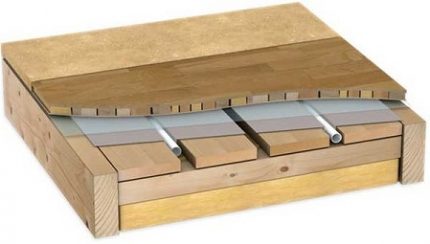
However, do not forget to leave a small margin. So, for example, for a 16 mm pipe, a groove of 20 * 20 mm is perfect. The end part of the base should have a narrow slit with rounded edges in the form of loops to provide rotation for the heat channel.
Features of the pipe assembly process
There is one important rule at the stage installation of underfloor heating pipes. A flat foil should be placed on top of each groove of the longitudinal type. All elements must be tightly wrapped with metal "paper" and securely fastened at the edges stapler to the blackboard.
After such actions floor heating pipe fastens to the floor with special plates on a metal base. This prevents the part from slipping out of the groove.
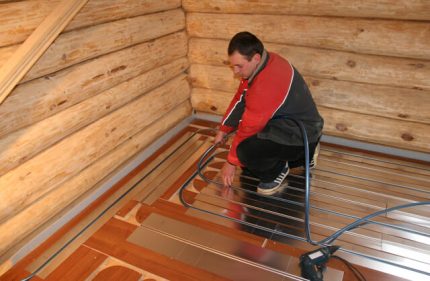
In order to save in advance calculate the exact amount necessary material. At the same time, they adhere to the established limit, in which the contour should not go beyond a certain area. In practice, this leads to a lack of pressure for the normal movement of the coolant and the "locking" of the circuit.
Therefore, for a pipe of 16 mm, the maximum pipe length of 70-80 m is recommended, and for 20 mm - 110 m. If the calculated length is not enough, it is rational to make a breakdown into several circuits.
Communication with the heating system
One of the last stages in the formation of a water-based floor heating system is the connection to the heating unit. This operation can be implemented in several ways.
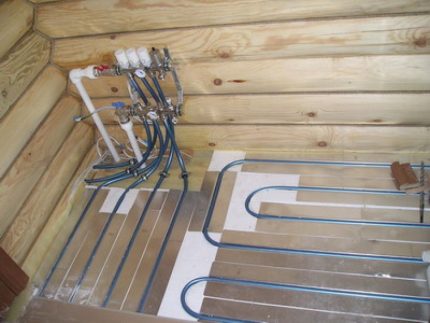
After connecting the elements, the process of crimping the pipeline is carried out. The procedure is mandatory, as it minimizes the risks of leaks and swelling of the coating. Preparation of the base for the installation of linoleum or laminate is the laying of plywood sheets.
How should linoleum be laid?
The process of laying polymer material is carried out in several successive stages, namely:
- before laying the product is kept for about 24 hours in the room;
- if the need arises, then the linoleum is cut into strips and spread on the surface without fixing;
- by turning on the heated floor, let the universal floor cover lie down for another 48 hours;
- fix the material in the most practical and appropriate way.
When choosing linoleum mounting options, adhesive mastic should be preferred. The resin must be of high quality and original (from a reliable manufacturer) so that the heat is distributed evenly over the surface.
It should be remembered that infrared film floor stands out for its ease of installation, and a competent water structure - for efficiency, reliability and durability.
With the rules and guidelines for the installation of underfloor heating under the laminate on a wooden base next article, in which all stages of the full cycle of work are analyzed in steps.
Conclusions and useful video on the topic
To avoid mistakes when arranging a warm floor, we offer you to watch informative and useful videos.
Features of laying a warm floor on a wooden flooring:
Professional recommendations for installing STP under linoleum:
After analyzing the above information, you can rationally determine which heating suits you. You can carry out the installation yourself, but if you are not sure about your capabilities, just invite professionals. Qualified specialists to carry out high-quality projects of various levels of complexity, while you save personal time.
Do you have experience installing a warm floor in a house with wooden floors? Maybe in your arsenal there are technological subtleties that are useful to site visitors? Please write comments in the block below, ask questions on controversial issues, post a photo on the topic of the article.

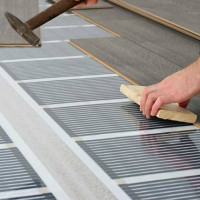 Warm floor under the laminate on the concrete floor: design nuances + detailed installation instruction
Warm floor under the laminate on the concrete floor: design nuances + detailed installation instruction 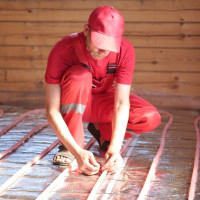 Warm water floor in a private house: diagrams, device rules + installation instruction
Warm water floor in a private house: diagrams, device rules + installation instruction  Linoleum electric underfloor heating: system advantages and installation instructions
Linoleum electric underfloor heating: system advantages and installation instructions 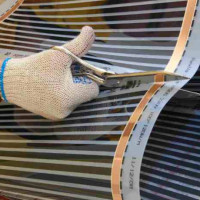 How to make a film underfloor heating under linoleum: instructions for laying an infrared heating system
How to make a film underfloor heating under linoleum: instructions for laying an infrared heating system 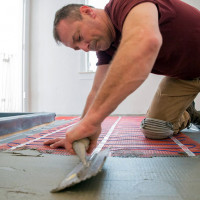 How to make a warm floor under linoleum on a concrete floor: detailed instructions
How to make a warm floor under linoleum on a concrete floor: detailed instructions 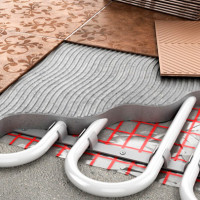 Underfloor underfloor heating: step-by-step installation instructions
Underfloor underfloor heating: step-by-step installation instructions  How much does it cost to connect gas to a private house: the price of organizing gas supply
How much does it cost to connect gas to a private house: the price of organizing gas supply  The best washing machines with dryer: model rating and customer tips
The best washing machines with dryer: model rating and customer tips  What is the color temperature of light and the nuances of choosing the temperature of the lamps to suit your needs
What is the color temperature of light and the nuances of choosing the temperature of the lamps to suit your needs  Replacement of a geyser in an apartment: replacement paperwork + basic norms and requirements
Replacement of a geyser in an apartment: replacement paperwork + basic norms and requirements
I have heard about the “warm floor” system for a long time, I did not think that it would be more effective than ordinary heating with pipes. Having visited a friend, I realized that in a house with young children, a warm floor is a very good alternative to the usual heating. Heat radiates from below and rises. I decided that this season in the children's room I will bed under the linoleum electric heating circuit. It seems to me that it distributes heat more evenly.
The best option, in my opinion, is to combine a warm floor with radiators. Because, for example, an electric heated floor is sensitive to furniture. My radiators are in the corner rooms and the hallway, and everything else is heated only by floor heating. It’s warm even in the freezing cold.